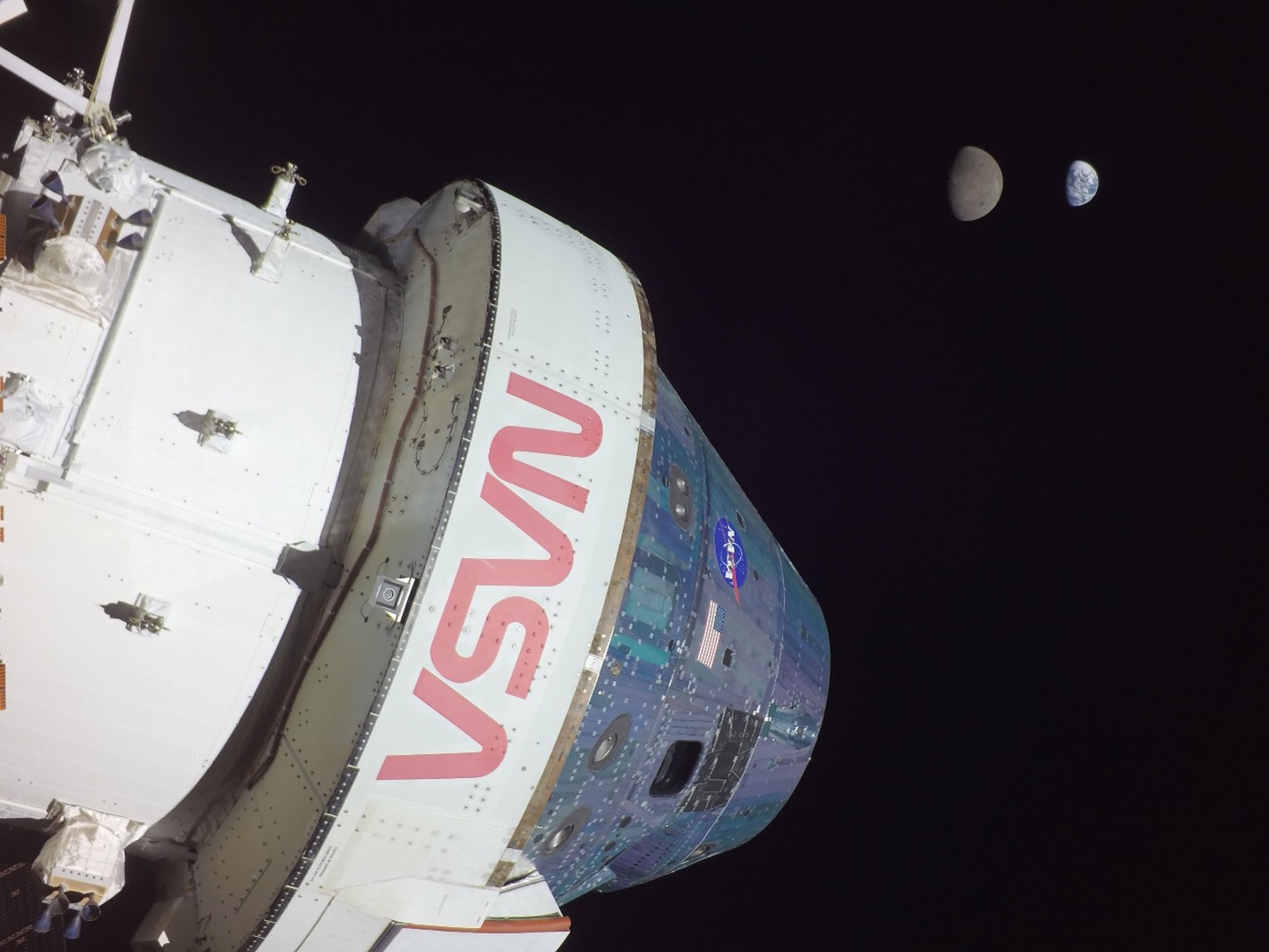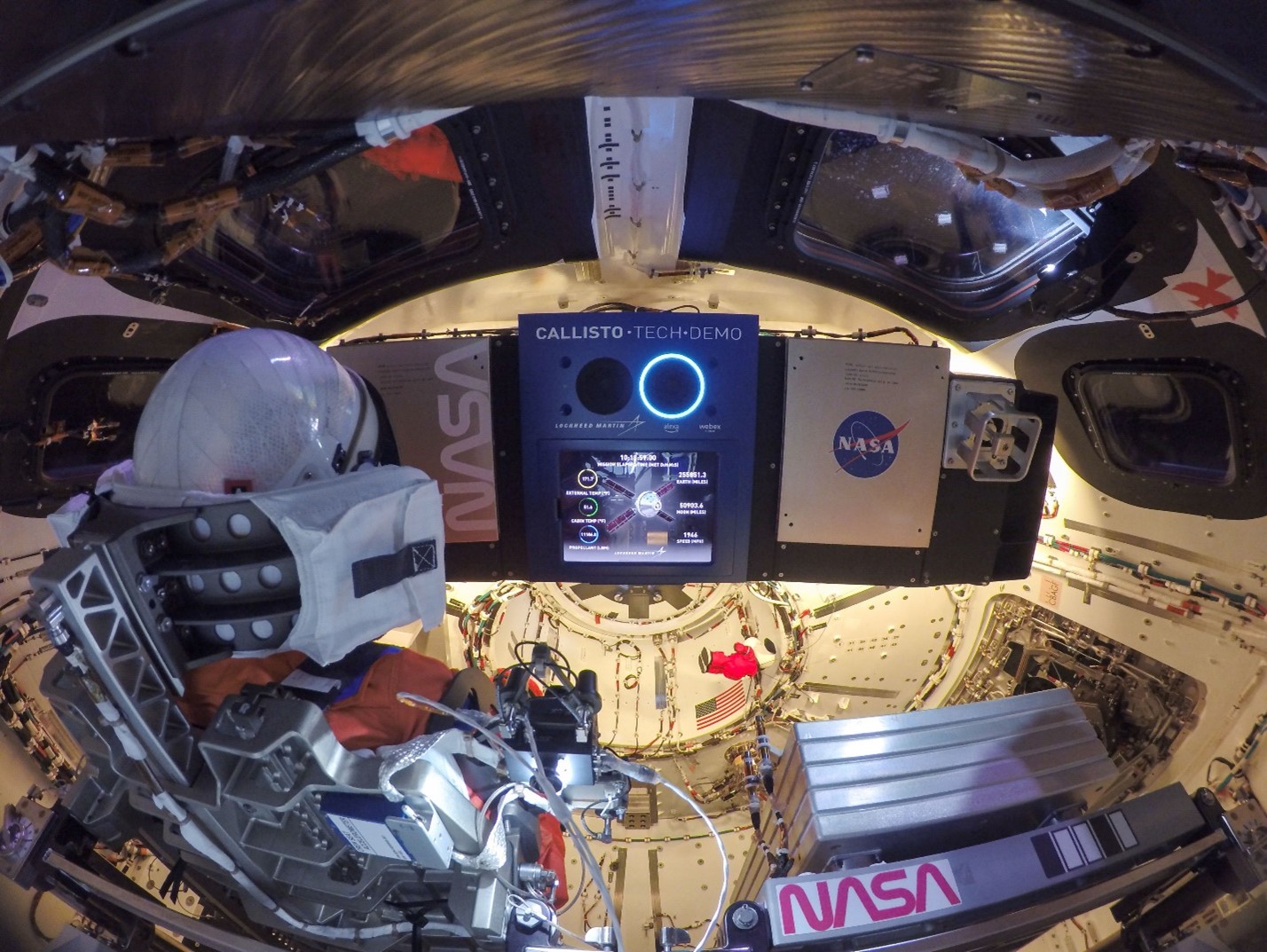Wireless cameras use Wi-Fi® to capture stunning imagery
Figure 1: This image from beyond the far side of the moon was taken by a highly modified GoPro camera mounted at the tip of a solar panel. The camera relayed the photo using Wi-Fi. (Source: NASA)
During the countdown procedure for the Artemis I launch, the flight control team at NASA’s Johnson Space Center in Houston activated a set of cameras looking back at the vehicle from the wing-tips of the solar arrays. Throughout the flight, the team used photos from these cameras to survey and assess the condition of the vehicle, monitor for micrometeorite damage, and maintain situational awareness. The ground control team was even able to watch live video as the solar array wings unfolded. The cameras continued to store imagery to internal memory as well as send photos over Wi-Fi® even as the vehicle lost communication with Earth as it flew behind the moon. Artemis I is the first NASA mission to use Wi-Fi in lunar orbit.
NASA’s Artemis I mission was designed to “test drive” new vehicle and ground systems before risking a human crew. Artemis II will carry a human crew aboard. Artemis III will land the next humans on the moon. For Artemis I, an Orion capsule and service module crewed by three test dummies were launched together on November 16, 2022, atop the first production-model Space Launch System (SLS) heavy-lift rocket. During the 25 intervening days before the Orion capsule reentered Earth’s atmosphere and splashed down in the Pacific Ocean, engineers exercised the features and subsystems of the stack of new vehicles and practiced several new orbital maneuvers around the moon and earth.
Figure 2: A solar array panel on the European Space Agency service module is framed from the vantage of the tip of a neighboring solar array. A Wi-Fi enabled camera is visible centered at the extreme end of the solar array. (Source: NASA)
The cameras had to be small and lightweight. The European Space Agency (ESA) supplied the service module, using a design that was derived from ESA’s Automated Transfer Vehicle (ATV). Placing a mass at the end of a delicate folding solar array structure required careful consideration. Would the cameras vibrate and knock during launch or deployment or vehicle maneuvers? Would the power wire tangle as the arrays unfolded? Would the structure oscillate whenever a thruster fired to adjust the spacecraft’s attitude?
The Avionic Systems Division at NASA’s Johnson Space Center developed the video architecture and built a working prototype video solution. The architecture includes a pair of video controllers, stationary wired cameras, and a method of supporting Wi-Fi enabled cameras. In this concept the two video controllers are linked with Wi-Fi CERTIFIED WiGig™ , allowing the service module to maintain communication with the capsule so the solar array cameras can capture video of the capsule separation. NASA also demonstrated that it was possible to build lightweight high-definition streaming wireless video cameras that could be mounted on the solar arrays. This concept became the basis for the wireless helmet camera system that was incorporated into NASA’s space suits.
The final design of the Artemis I flight solar array wing cameras was developed by Redwire. Derived from GoPro cameras, the Artemis I cameras are capable of storing photos and video and transferring the files over Wi-Fi, or wirelessly streaming lower resolution video. Redwire needed to modify firmware and hardware on the commercial cameras, adding a light for illumination, replacing the lens, and repackaging the camera for operation in the space environment. Redwire also built the separate camera controller assemblies which served as Wi-Fi access points: one on the Orion capsule and one on the ESA service module. In all, this system comprised seven wireless cameras (four on the solar array wings of the service module, three in the cabin of the capsule), three higher-resolution wired cameras, and two camera controller assemblies.
Callisto technology demonstration
Orion’s crew cabin also carried a technology demonstration payload called “Callisto.” Callisto used the Redwire Wi-Fi to transfer telemetry, audio, and conference video. And the Callisto team added three more of the GoPro-derived wireless cameras for situational awareness. A joint partnership between Lockheed Martin, Amazon Alexa and Webex by Cisco, this demonstration tested new crew interfaces that could potentially be implemented on future missions to streamline everyday tasks for the crew and to improve morale. Where the flight displays, walls and ceiling of the Space Shuttle and Apollo cockpits were covered with toggle switches, Callisto occupied the center position of the Orion display console and demonstrated crew display applications on an iPad, an Alexa local voice control interface to vehicle telemetry, and Webex video conferencing and collaboration.
Since there were no astronauts on-board Orion for Artemis I, the system was evaluated by “virtual crew members” invited to the payload operations suite in the Johnson Space Center Mission Control Center. Callisto connected to the same Redwire-provided crew module camera controller that supported the Orion cameras. That Wi-Fi access point forwarded the guests’ voice and video that originated in the operations suite and passed through NASA’s Deep Space Network. That same access point simultaneously connected the payload to the vehicle’s local network for the payload to directly access vehicle telemetry.
Figure 3: Commander Moonikin Campos regards the wireless Callisto console inside the Artemis I Orion capsule. The image was captured by a wireless camera. (Source: NASA)
WiGig
Redwire’s camera controller assemblies were designed to communicate with each other wirelessly over a high-bandwidth connection using WiGig technology. This capability is used to transfer video of the Orion capsule from the solar array cameras during the service module separation event. This “critical event” video sequence documents the condition of the heat shield just before reentry. NASA intends to use this WiGig connectivity on Artemis II.
The flexibility of wireless networks and the tight integration of commercial products
The early design choice of using the Wi-Fi industry-standard interface yielded the dividend of extensive flexibility to relocate components and to add unrelated components all without modification to the spacecraft wiring harnesses. Network connectivity can even be maintained between stacked vehicles as they separate. For mission designers the lunar and space environments impose significant constraints including size, mass, and power consumption. An industry-standard interface that can be integrated into commercially available diminutive, ruggedized, and interoperable products is an attractive choice for lunar mission design engineers.
Trade names and trademarks are used in this report for identification only. Their usage does not constitute an official endorsement, either expressed or implied, by the National Aeronautics and Space Administration.
The statements and opinions by each Wi-Fi Alliance member and those providing comments are theirs alone, and do not reflect the opinions or views of Wi-Fi Alliance or any other member. Wi-Fi Alliance is not responsible for the accuracy of any of the information provided by any member in posting to or commenting on this blog. Concerns should be directed to info@wi-fi.org.







Add new comment